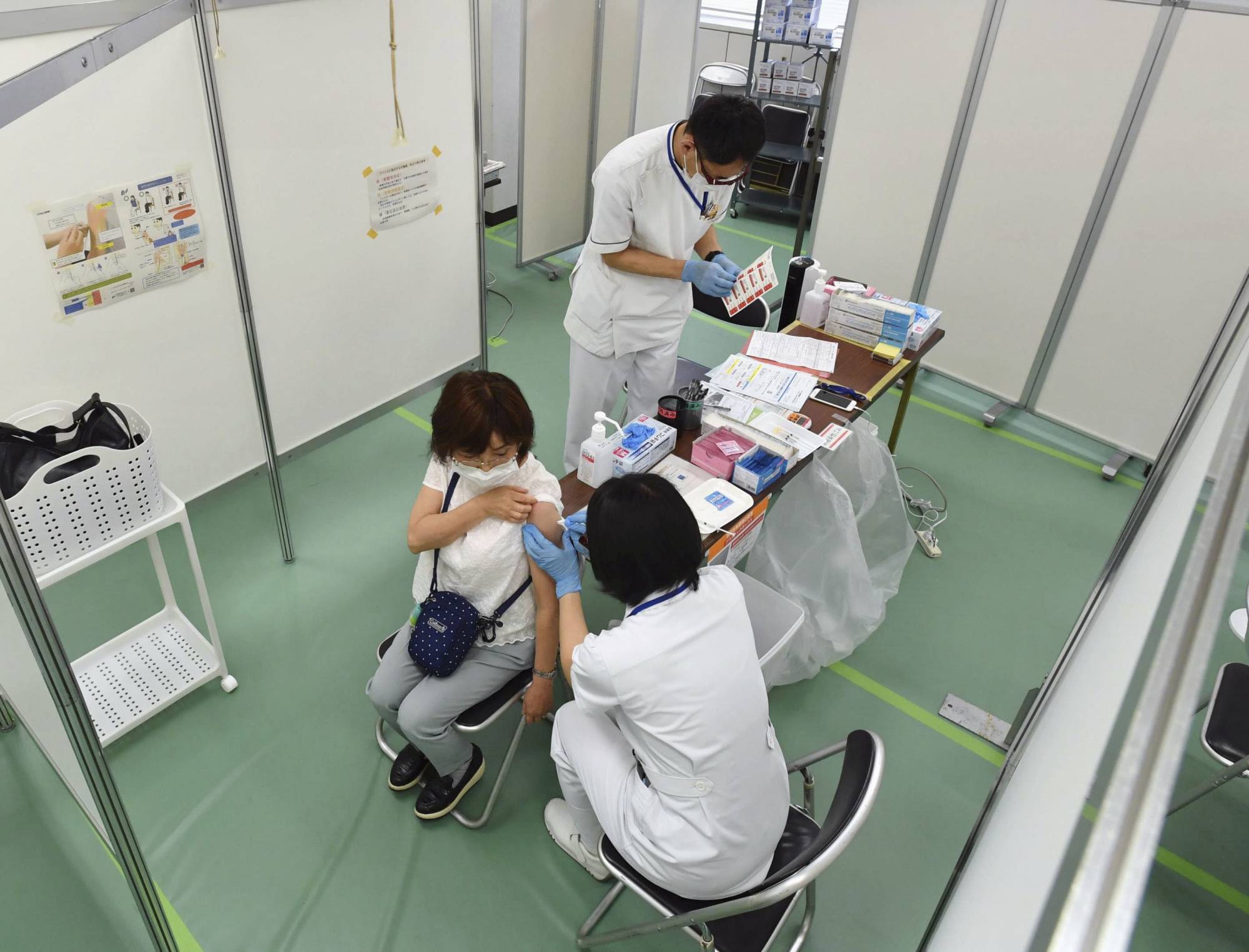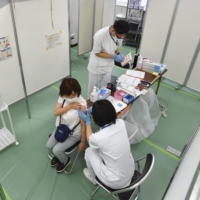The Tokyo Olympics officially kick off Friday evening after a yearlong delay due to the coronavirus pandemic, even as the capital remains under a state of emergency to curb another resurgence of the virus.
Although the country is quickly catching up to Western nations in terms of the number of vaccinations administered, a combination of the more contagious delta variant and increased foot traffic is being blamed for driving up the number of new cases confirmed each day.
Here is a summary of how Japan has coped with COVID-19.
COVID-19 cases
Japan was among the first nations to be hit by the virus, with the arrival of a cruise ship in Yokohama in February 2020.
The number of serious cases and the death toll have remained significantly lower than the hardest-hit countries — notably the United States, Italy, Brazil, India and the United Kingdom. According to health ministry data, Japan had logged over 852,000 cases and more than 15,000 deaths through Thursday.
The situation worsened from late last year to late January and from March to May as the nation went through a third and a fourth wave of cases. In Osaka, the health care system essentially collapsed during the fourth wave, with some critically ill patients not able to be admitted to hospitals.
The nation, particularly in metropolitan areas and their adjacent prefectures, is facing a fifth wave of infections, with Tokyo having consistently recorded over 1,000 new cases each day since Wednesday last week.
One of the problems driving up the surge is the delta variant. The National Institute of Infectious Diseases estimates that by mid-July the dangerous variant had accounted for roughly 60% of all positive cases in the Kanto area which includes Tokyo, and 20% in the Kansai region, encompassing Osaka.
States of emergency
Unlike draconian lockdown measures imposed in Europe and elsewhere, Japanese countermeasures for the coronavirus have largely depended on voluntary cooperation from the public.
Once the prime minister designates the duration of a state of emergency and prefectures where the restriction will be imposed, the relevant prefectural governors are able to legally request that businesses shorten their hours or shut down temporarily to curb the spread of the virus. If those businesses refuse to comply with the request, the prefectural governors can then order them to limit their activities. In extreme cases, governors can disclose the names of entities that disobey the order, as a way of public shaming, and charge a non-penal fine of up to ¥300,000. There are no prison terms for violators.

Since last April, the prime minister has declared a state of emergency four times. Since the second emergency, declared in early January this year, the central government has squarely targeted eating and drinking venues, as it considers these establishments to be hotbeds of community transmission.
In the current and fourth state of emergency, restaurants, pubs and cafes that serve alcohol in Tokyo and Okinawa have been asked to close through Aug. 22. Other eateries that do not serve alcohol are asked to close by 8 p.m., but they can remain open later if they close indoor dining spaces and only accept takeout or delivery orders.
In addition to the state of emergency, Japan has introduced quasi-emergency measures allowing prefectural governors to implement steps without the declaration of a full state of emergency. Currently, Chiba, Saitama, Kanagawa and Osaka have such quasi-emergency measures in place. The key difference is that under a quasi-emergency the maximum value of nonpenal fines is ¥200,000, and the governors can’t request or order businesses to close completely.
Vaccinations
Compared with many countries in the West, Japan fell behind in its rollout of vaccines to inoculate the population.
Japan began vaccinating front-line essential workers in February and people age 65 and above on April 12. The slow rollout is attributed to a number of factors, including a lack of vaccines manufactured domestically and red tape in getting shots approved for use, including mandatory domestic clinical trials.
Pfizer, Moderna and AstraZeneca vaccines have been approved, but there are no immediate plans to use the AstraZeneca shots, many of which have been donated to other Asian countries.
The speed of the vaccination rollout was accelerated with the launch of a mass-vaccination campaign by the Self-Defense Forces in Tokyo and Osaka in May. Prime Minister Yoshihide Suga vowed to mobilize SDF doctors and nurses to vaccinate up to 10,000 people per day in Tokyo and 5,000 per day in Osaka.
In a series of rapid-fire announcements, the prime minister pledged to vaccinate by the end of July all people age 65 and above who wished to be immunized, and to administer 1 million doses each day in order to reach the July target.
As of Wednesday, 35% of the population had received at least one dose and 23% of the population had been vaccinated twice, according to the Prime Minister’s Office. Among people age 65 or above, 62% had received two doses.
In a time of both misinformation and too much information, quality journalism is more crucial than ever.
By subscribing, you can help us get the story right.
SUBSCRIBE NOW




